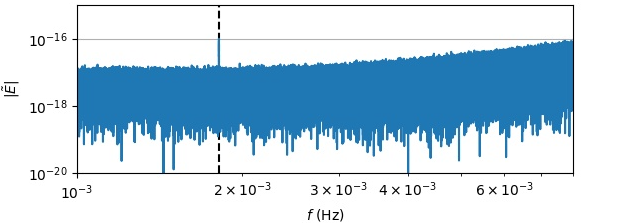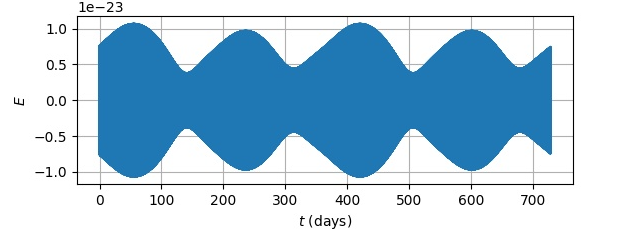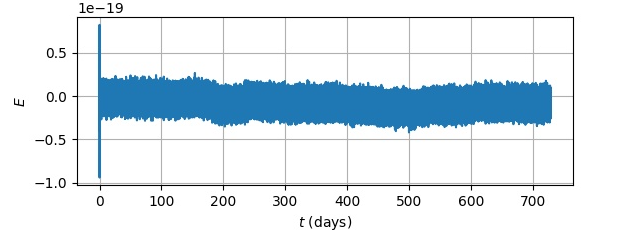
Examples of gravitational wave sources in the frequency domain to which LISA is sensitive.
Figure extracted from "Laser Interferometer Space Antenna. A proposal in response to the ESA call for L3 mission concepts. (Lead Proposer: Prof. Dr. Karsten Danzmann)".
Unlike ground-based observatories, which are sensitive to rare gravitational wave signals and subject to dominant measurement noise, a space interferometer will continuously receive a large number of distinct signals, theoretically characterized at varying degrees of accuracy. Current estimates of source quantities and types include 60 million galactic binary systems continuously emitting, 10 to 100 annual signals from supermassive black holes, and 10 to 1000 annual signals from binary systems with very high mass ratios.
One of LISA's scientific objectives is to study the formation and evolution of galactic binary systems: white dwarfs, but also neutron stars or stellar origin black holes. Several so-called "verification" binary systems are already identified as gravitational wave sources detectable by LISA, and this number is expected to increase significantly as a result of measurements collected by the Gaia satellite and the LSST telescope. Far from coalescing, these systems behave as quasi-monochromatic sources.
LISA should allow the characterization of about 25,000 galactic binary systems. The many other systems that escape individual detection will form a stochastic background, or confusing noise. In addition, as in any experiment, the actual data will be subjected to a number of noises and artifacts to be taken into account to optimize the scientific potential of the mission.

Spectral analysis of the simulation of a signal produced by a single source emitting at 1 mHz, without instrumental noise. The quasi-monochromatic nature of the signal is explicit.
The unifying thread of the work carried out at IRFU is a demonstration of the scientific and technical capacity to process real data in a reliable and robust way. Galactic binary systems are an excellent testing ground. This type of signal is measurable on LISA, and its form for an individual system is well known from a theoretical point of view.
Nevertheless, extracting information of astrophysical interest from these signals requires solving different signal processing problems such as :
- The separation of several individual sources, appearing as a spectrum of lines, from a stochastic background.
- Taking into account unexpected deviations ("glitches") in the analysis of data based on LISA Pathfinder's feedback.
- Analysis based on incomplete data, due to periods of interruption in data acquisition (maintenance, subsystem instabilities, etc.).
- The development of robust analysis methods against non-Gaussian, non-stationary or correlated noise.

Spectral analysis of the simulation of a signal produced by a single source emitting at 1 mHz, with instrumental noise. The quasi-monochromatic nature of the signal is clearly distinct from the instrumental noise.
IRFU is studying the impact of these different elements on the estimation of gravitational wave signals, and is developing new methods inspired by similar problems in image processing applied to astrophysics. These methods are based on the sparse modeling of signals. This allows the differences in shape or morphology between these signals and noise to be exploited to solve inverse problems. All these activities can lead to constraints in the design of the mission, tools or data processing methods.
• Modelisation, calculation and data analysis › Modeling and visualization methods
• The Electronics, Detectors and Computing Division • The Nuclear Physics Division
• Nucleon Structure Laboratory (LSN) - The internal structure of hadrons





